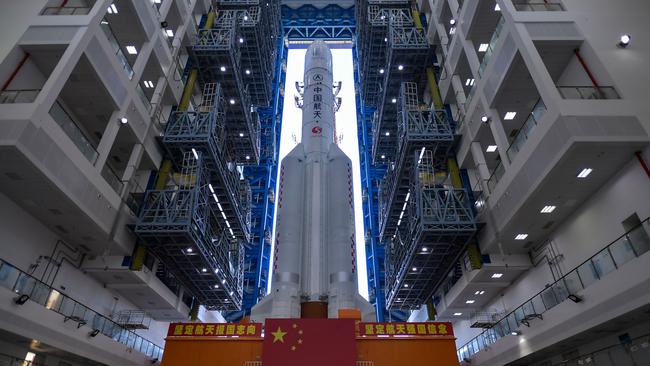Lift-off to cosmic rivalry in missions to Mars
The rivalry between the US and China assumes cosmic proportions, as both countries prepare to send spacecraft to Mars within days of each other.

The rivalry between the US and China assumes cosmic proportions this month, as both countries prepare to send spacecraft to Mars within days of each other.
The head-to-head Mars missions are the latest sign China is ready to challenge the US in space exploration, in recent decades an American preserve.
China’s first mission to another planet, the Tianwen-1, is set to blast off this week — the exact day has not been announced — on a seven-month journey to Mars. It will orbit the red planet for two to three months before deploying a rover that will conduct scientific experiments on the Martian surface.
The US mission, due to launch next Thursday, will land the Perseverance rover on Mars. It will also deploy the Ingenuity Mars helicopter, the first craft capable of powered flight on another planet.
“The US is clearly uncomfortable with the idea that China could overtake it in all manner of ways,” said Dean Cheng, a senior research fellow at the Heritage Foundation, a US think tank. “It matters to the US psyche that it stays ahead in space.”
President Xi Jinping has put China’s national space program at the heart of a quest for “great rejuvenation” after a century of perceived humiliation in which China fell behind the West. In a letter to Chinese space scientists published this year, Mr Xi urged China’s space scientists to “achieve the early realisation of the great dream of building a powerful space nation”.
China first put a man into space in 2003, more than four decades after Russia and the US, but since then its space program has steadily chalked up milestones.
Last year, a Chinese probe, the Chang’e 4, became the first to touch down on the far side of the moon. In June, China put the 35th and final BeiDou-3 navigation satellite into orbit, completing its homegrown rival to the US Global Positioning System.
There have been setbacks, too: the failure of China’s new Long March 5 heavy-lift rocket during a 2017 test set back the country’s space program by a couple of years. But two successful flights in December and May suggest the rocket’s glitches have been resolved. The Long March 5 will power this week’s Mars mission, and put a planned Chinese space station into orbit by 2022.
By 2030, China aims to have collected Martian rock samples and returned them to Earth, and it wants a manned lunar base and the capability to send men to Mars by 2045.
The timing of this month’s launches is primarily dictated by the motion of the planets.
Every 26 months, the Earth and Mars swing relatively close to one another, providing a narrow window for Martian missions. The United Arab Emirates also took advantage of the latest alignment by launching a Mars probe on Sunday. The US and Russia have launched multiple probes to Mars in the past, while Europe, India and Japan have also sent spacecraft there.
The latest American Mars mission will gather samples for return to Earth on a future mission. The US then aims to put astronauts back on the moon by 2024, and to launch a manned Mars mission in the 2030s. The Science and Technology Policy Institute said last year the US could aim to launch a manned Mars mission in 2037 at the earliest, at a cost of more than $US120bn.
China’s one-party system provides a measure of certainty for the country’s space program, whereas NASA’s missions have sometimes fallen victim to shifts in spending priorities with new administrations. However, the US has the advantage of a flourishing space private sector, led by companies such as SpaceX and Blue Origin.
Last year, the US created a military Space Force to counter space-based threats, chiefly from China and Russia.
About half of the missions sent to Mars since exploration of the planet began in the 1960s have failed.
Most recently, the European Space Agency’s Schiaparelli lander was destroyed when it crashed into the Martian surface in 2016, although the US successfully reached Mars with its InSight lander two years ago.
The Wall Street Journal


